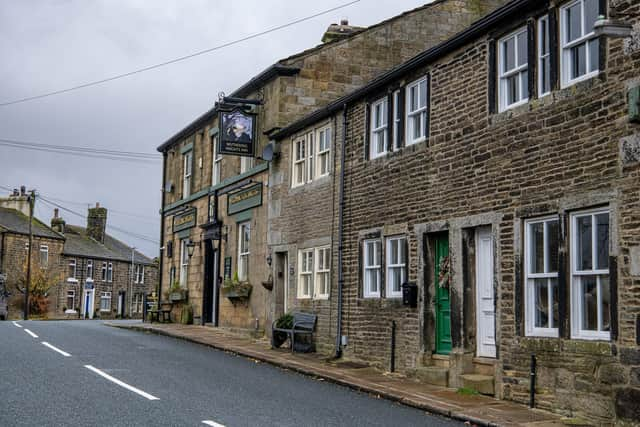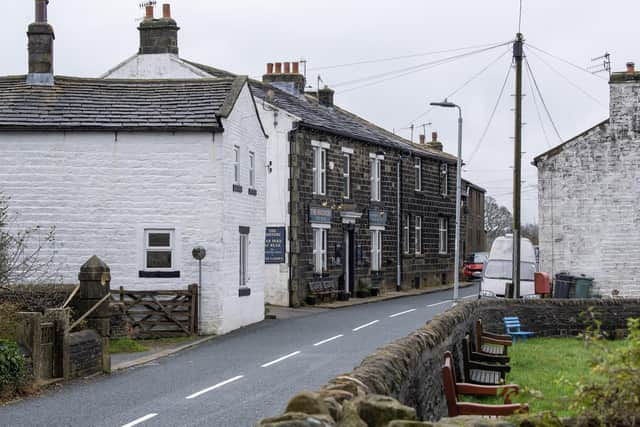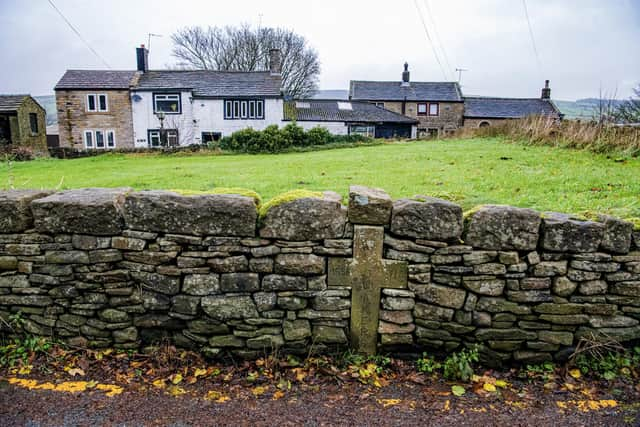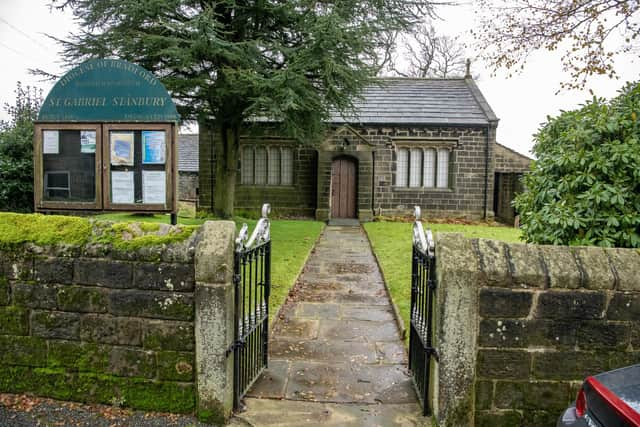Village of the Week: Stanbury is all wild moors and links to the Bronte sisters
It is a village that possibly pre-dates The Domesday book and was a haven for Quakers.
Stanbury is also intrinsically linked to one of the most famous and literary families in the world.
Advertisement
Hide AdAdvertisement
Hide AdUnder the borough of the City of Bradford, Stanbury comes under the parish with Haworth – which of course was the former home of the Bronte writing sisters.


The parsonage where they lived is now a museum and the whole area is probably more well-known for being called Brontë country.
Many natural features and surroundings have also been re-named to reflect the area’s famous residents.
Brontë Waterfall on the South Dean Beck is about a mile south-west of Stanbury and below that is Brontë Bridge, an old stone bridge across the beck.
Advertisement
Hide AdAdvertisement
Hide AdThen there is The Brontë Trail, a nature trail which starts in Haworth and crosses the moors to the waterfall.


But undoubtedly the Brontë writing dynasty took just as much from the area and the landscapes, weather, places and people of this part of West Yorkshire were hugely influential in works that have become classics and continue to set academic agendas and curriculums some 180 years later.
Charlotte, Emily and Anne – along with brother Branwell – were the children of Patrick Brontë and Maria Branwell.
Patrick was originally from Ireland and Maria from Guiseley, near Leeds. They lived at Liversedge but it is said that by 1820 they were living at the parsonage at Haworth where he had taken up the post as perpetual curate – or parish priest.
Advertisement
Hide AdAdvertisement
Hide AdTheir eldest two children, Maria and Elizabeth, died within weeks of each other at the ages of 11 and 10 respectively, of tuberculosis and while their siblings also died at what are relatively young ages – they certainly made an impact.


Charlotte (1816–1855) is the author of Jane Eyre, which was her best-known work. She died on March 31, 1855, just before reaching the age of 39.
Emily Jane died in Haworth on December 19, 1848, aged 30. Wuthering Heights was her only novel.
Anne (1820–1849) wrote a largely-autobiographical novel entitled Agnes Grey, but her second novel, The Tenant of Wildfell Hall (1848), was far more ambitious. She died on May 28 1849 in Scarborough, aged 29.
Advertisement
Hide AdAdvertisement
Hide AdThey all wrote their novels while they were living at The Parsonage.


It has long been the theory that Top Withens, also known as Top Withins, now a ruined farmhouse near Haworth, was the inspiration for the location of the Earnshaw family house in Wuthering Heights.
A plaque on the wall says: “This farmhouse has been associated with "Wuthering Heights", the Earnshaw home in Emily Brontë's novel. The buildings, even when complete, bore no resemblance to the house she described, but the situation may have been in her mind when she wrote of the moorland setting of the Heights.”
The Brontë Society put it up in 1964 due to the number of enquiries it was getting.
Advertisement
Hide AdAdvertisement
Hide AdThe ruin lies on the Pennine Way and is so popular with walkers and book fans, especially Japanese tourists, that some signs for the public include directions in Japanese.
It was reported in the Todmorden and District news a week after the event in 1893, that “top Withens was struck by lightning during a thunderstorm. Holes were made in the wall, the roof was partially torn off, flags were cracked, and around 30 windows were almost completely removed. A portion of slate was thrown far from the house by the wind, and in the kitchen the blade of a knife had been fused by the heat. A bowl of dough prepared by the farmer's wife, Mrs. Sunderland, was smashed to pieces, and her dog and cat fled the building in fear.”
Ponden Hall, which started out as a farmhouse back in 1634, is also significant to the novels. It is believed to be the inspiration for Thrushcross Grange, the home of the Linton family, in Wuthering Heights but possibly also Wildfell Hall, the old mansion where Helen Graham, the protagonist of Anne Brontë's The Tenant of Wildfell Hall, fled from her husband.
The building shares architectural details with Wildfell such as latticed windows, a central portico and the date plaque above.
Advertisement
Hide AdAdvertisement
Hide AdPonden also had, in the 1800s, a large private library that the Bronte children would visit. The property was converted in 2014 into an award-winning bed-and-breakfast, and in September 2020 was listed for sale for £1m.
It has made for a huge interest in Stanbury and Haworth and while it has brought a tourist economy to an otherwise rural and isolated area - it hasn’t come without issue.
In September a public meeting was called to discuss a number of concerns raised by residents and business owners of Haworth about the village’s annual 1940s Weekend.
It has taken place since the 1990s and now attracts around 40,000 visitors – which many locals claim has led to issues with its management and organisation. There were claims of visitors urinating in the churchyard where Patrick Bronte was parish priest as well as issues over parking and anti-social behaviour.
Advertisement
Hide AdAdvertisement
Hide AdLast month it was announced that new organisers would be taking it on following meetings between Bradford Council, West Yorkshire Police and the previous organisers.
Stanbury remains sought after, not just because of the literary appeal, but also its location and views. There is a church, school and two pubs - The Friendy, and of course The Wuthering Heights.
It dates back to the 1790s and has been re-named down the line.
It featured in a Yorkshire Post pub of the week column this summer and punters will be pleased to know it hasn’t succumbed to a Farrow and Ball make-over, has copper kettles hanging from the rafters and wooden stoves - and a decent pint of real ale.
